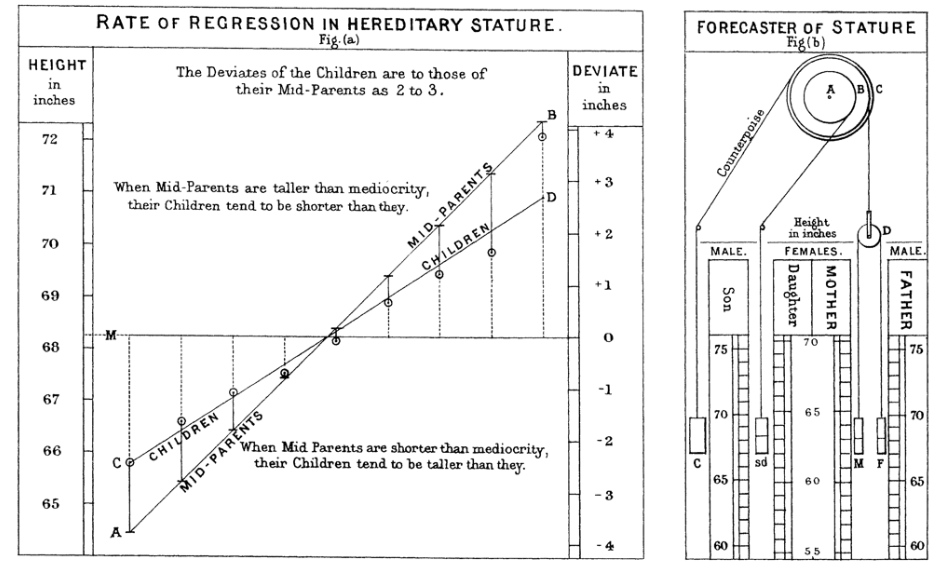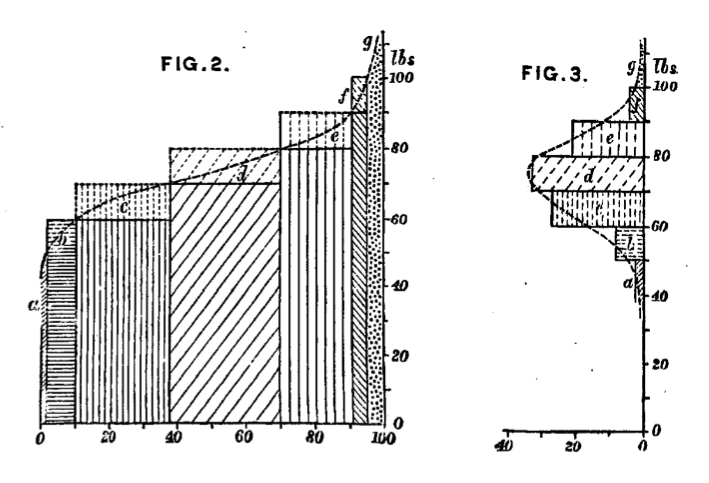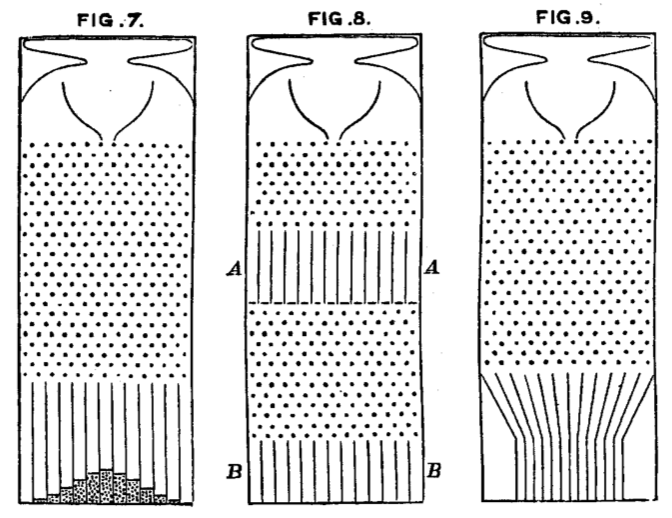opposition
same_person
Regression towards mediocrity
1888



Quincunx device (p.63) “most of the shot finds its way into the compartments that are situated near to a perpendicular line drawn from the outlet of the funnel, and the Frequency with which shots stray to different distances to the right or left of that line diminishes in a much faster ratio than those distances increase. This illustrates and explains the reason why mediocrity, is so common.” (p.66)
(Galton, 1888)Durkheim identified the moral with the normal. For Galton the normal was not good but mediocre. Some extremes were not pathological but superb. The right and the good are to be found at the right hand end of the Normal curve of talent or virtue.
(Hacking, 1990, p.178)We now say regression towards the mean rather than reversion towards mediocrity, but Galton’s terminology reveals his fascination with the exceptional, the very opposite of Quetelet’s preoccupation with mediocre averages.
(Hacking, 1990, p.181)[Galton] subscribed to Quetelet’s doctrine that most of the interesting traits of people and living species have a Normal distribution - they follow what Galton himself was soon to describe in just those words: ‘the Normal curve’. I do not claim any direct connection with the Comte-Broussais use of the word ‘normal’- by the time that Galton attached the word to the curve, the word just meant typical, and carried all the Comtian baggage with it. The match between the word and the curve was waiting to be consummated.
(Hacking, 1990, p.184)Galton, F. (1886) ‘Regression towards mediocrity in hereditary stature.’, The Journal of the Anthropological Institute of Great Britain and Ireland. 15, pp. 246–263. [link]
Galton, F. (1888) Natural inheritance. Macmillan and Company. [link]
Hacking, I. (1990) The Taming of Chance. Cambridge University Press.
opposition
same_person